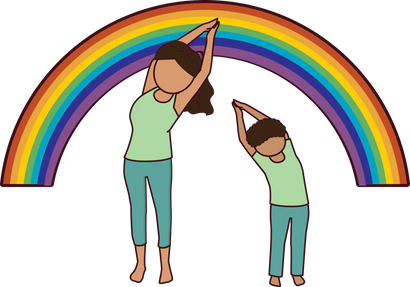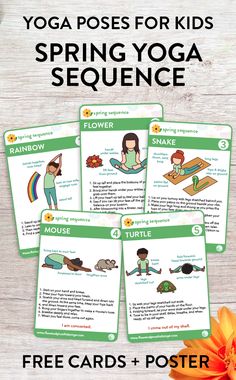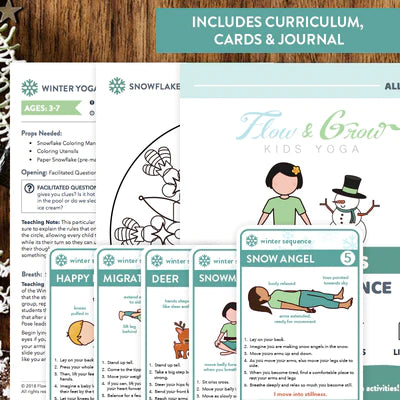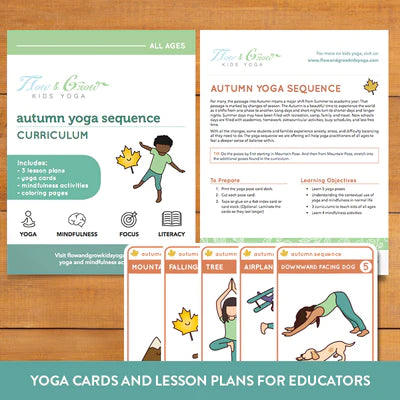Your Cart is Empty
22% off Automatically at checkout when you spend $5 of more!
22% off Automatically at checkout when you spend $5 of more!
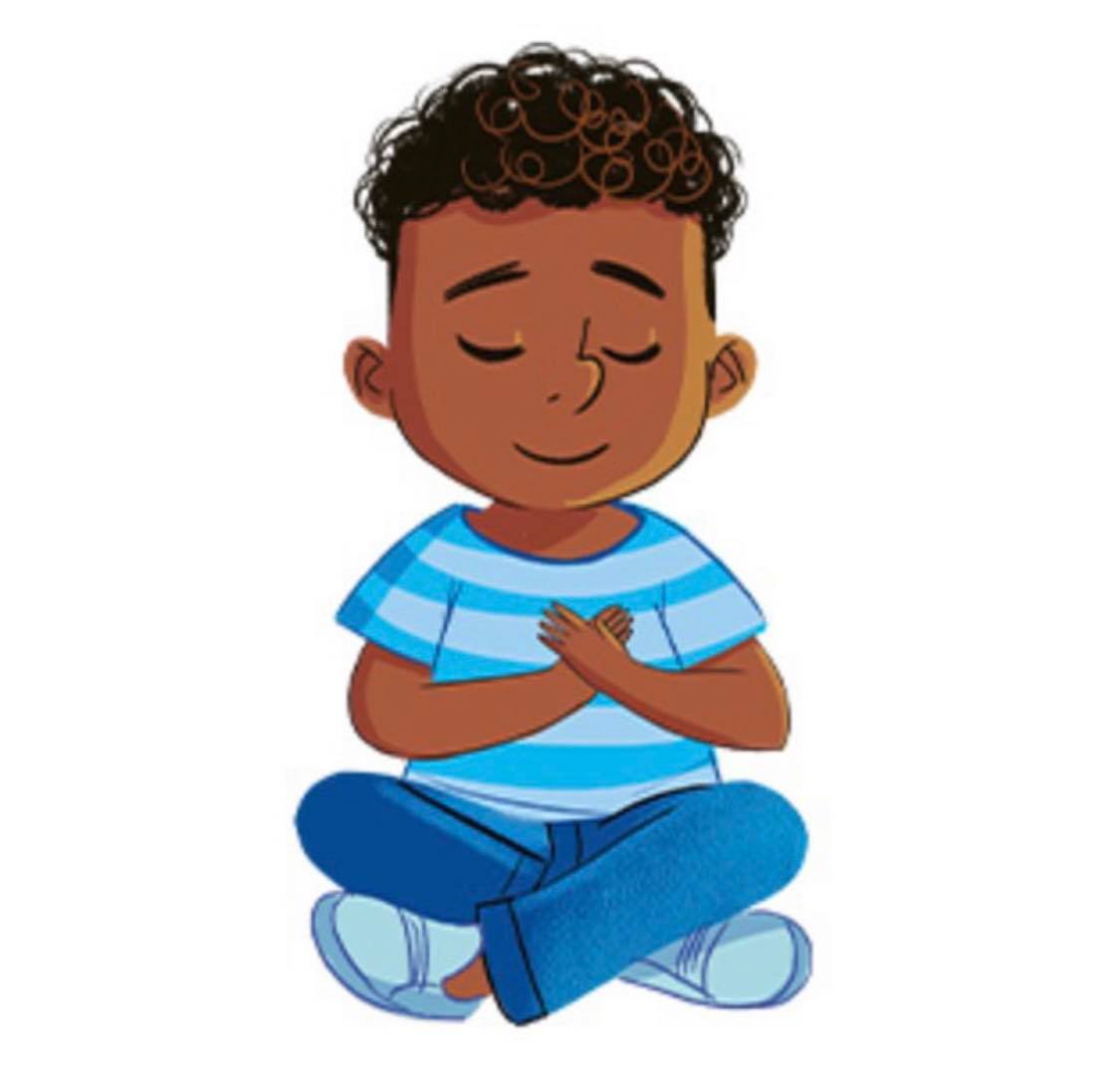
Mindfulness made approachable and accessible for the whole family: Lara Hocheiser's Mindfulness Workbook
by Lara Hocheiser November 08, 2021 4 min read
written by blog manager Kathryn Boland
What comes to mind for you when you think of mindfulness? You likely don't think of a five-year old practicing it. Yet mindfulness can absolutely be adapted to be fully accessible and approachable to kids.
Why do that adapting? Kids are learning and growing at just about lightspeed, it can seem like. Learning, growing and gaining new experiences -- as wonderful as all of that is -- can come with uncertainty, anxiety, disappointment, and other challenging emotions. With a kid-friendly mindfulness practice, young ones can begin gaining the skills to handle life's ups and down with more calm, joy, and authentic connection with other people.
Lara Hocheiser's andMindfulness Workbook, for ages 5 and up but specifically designed for ages 5-7, offers more than 60 exercises to start kids on their mindfulness practice journey. These exercises also open windows for parents to engage in their child's learning and growth, and even benefit through mindfulness themselves -- creating the potential to make more connected and harmonious families.

How does Hocheiser make mindfulness kid-friendly, and moreover in a book format where the content itself has to carry the learning and understanding? Interactivity makes the content engaging. Relatability can further draw young readers, foster understanding, and helpthem feel better understood.
Finally, in many ways the book offers suggestions for continuing the practice beyond the book -- therein placing the exercises as stepping stones to an even longer, deeper, and more fruitful practice long after the book is finished.
Interactivity
From drawing to writing to choices among given options, interactivity is the name of the game with this book. Well, it is a workbook, so that's par for the course, right? On the other hand, when I think of workbooks, I think of dull visuals and drab lines for dry answers to dry questions (might just be my elementary school memories talking there!).
Yet this workbook’sactivities are interactive in a way that kids willwant to interact with: drawing from their imaginations, writing about their thoughts and feelings, reflecting on their favorite things and less-than-favorite things.
To the former, young readers are guided to draw their "worry monster" (and thus externalize it into something not so scary, maybe something that can even make them giggle) and at another point someone or something that makes them feel calm and happy.
To the latter, the workbook guides kids to write three things they see that they are grateful for. That can help take attention away from worry and anxiety -- and, in a larger sense, to begin recognizing that even in challenging moments there are things in one’s life to celebrate. In another exercise, the workbook guides readers to think of three kind, loving thoughts to send to someone they care about (and it doesn’t even have to be someone the reader is with!).

Truly engaging graphics and compelling writing frame all of this interactivity, making the exercises a pleasure rather than a chore to accomplish. It's all in service of the ultimate goal: giving kids tools for managing big emotions, interacting in more prosocial ways, and knowing themselves better.
Relatability
All of the above also attests to thesincere relatabilityof the content as well; Hocheiser doesn't write like an adult talking down to a child on subject matter that they have no reference point for or interest in -- quite far from it! For example, she includes periodic stories of how kids use mindfulness to better handle challenging situations, hurt feelings, interpersonal disagreements, and the like.
These stories sound like genuine snapshots from kids' lives: arguing with a sibling over a broken toy, nervousness over going to a new school, self-doubt about one's skills in math class, struggle to pay attention to a parent saying something serious (and maybe um...a little boring).
I could picture children reading these stories and seeing their lives reflected. For one, that can engage them more closely -- because the content is familiar, understood, and interesting. For two, kids can see that this mindfulness stuff they're reading about couldhelp them, too; maybe it's not just for grown-ups!
Thus engaged, kids can follow along, learn, try the exercises, and start to form a mindfulness practice. From there, they can watch their ability to manage tough emotions, interpersonal challenges, and other hard situations with more grace and ease. What a gift to start that young!

Stepping stones
Indeed, Hocheiser makes clear that this book can bejust the beginning. She suggests ways to use certain exercises over and over again to feel better, for instance. One exercise has kids drawing themselves doing things that make them feel proud and awesome -- and Lara suggests bookmarking that for when readers might need a confidence boost or a reminder, for any reason, about why they're special.
Hocheiser is also realistic about the scope of the book, offering kids ways to seek support outside of it -- such as in consulting a trusted adult or a friend a reader may trust. Hocheiser demonstrates that the practice isn't really found in the book (as much as it’s a wonderful guide), but out in life and in the world.
In a closing letter to readers, she suggests picking favorite exercises from the book and making sure to practice them often -- thus making it amindfulness practice. She also challenges readers to choose a friend to teach these exercises: a wonderful way for the book to create ripple effects of greater and greater harmony and joy.
When children learn to handle life's challenges and embrace its joys even more fully through mindfulness, the world can benefit. And it can start with one little workbook. Brava and thank you to Lara Hocheiser and publishers for that incomparable gift!
You can learn more about the workbook and purchase a copy here! For more mindfulness and social/emotional learning tools for kids, check out our shop as well!

Lara Hocheiser
Leave a comment
Comments will be approved before showing up.
Also in Kids Yoga Blog

How Social and Emotional Learning and Yoga Help Kids Breathe Through Big Emotions
by Kane SEO April 21, 2025 4 min read
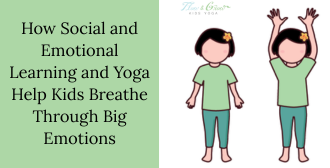
How Social and Emotional Learning and Yoga Help Kids Breathe Through Big Emotions
by Kane SEO April 14, 2025 4 min read
In classrooms and communities around the world, educators and parents alike are placing a growing emphasis onsocial and emotional learning. And for good reason: helping children understand, manage, and express their emotions in healthy ways is just as critical as teaching them to read or do math.

Power of Yoga for Kids: How It Helps Them Grow, Focus, and Thrive
by Kane SEO March 25, 2025 5 min read
In today’s fast-paced world, children are often exposed to stressors from a young age, whether it’s academic pressure, social challenges, or the overwhelming influence of digital devices. This can impact their physical, mental, and emotional well-being.
Ultimate Kids Year of Yoga Bundle
bundlespricey-contentdigital-resourcesearly-childhood-yoga-mindfulnesselementary-yoga-mindfulnesskids-yoga-resourcesmiddle-high-school-yoga-mindfulnessseasonal-yogayoga-cards
Ultimate Kids Year of Yoga Bundle
5 reviews
5.0 / 5.0
(5) 5 total reviews
$45.00
Ultimate Kids Year of Yoga Bundle
5 reviews
5.0 / 5.0
(5) 5 total reviews
$45.00
Kid’s Sun Salutation Yoga Cards
digital-resourcesearly-childhood-yoga-mindfulnesselementary-yoga-mindfulnesskids-yoga-resourcesliteracyunder-15yoga-cards
Kid’s Sun Salutation Yoga Cards
3 reviews
4.33 / 5.0
(3) 3 total reviews
$10.00
Kid’s Sun Salutation Yoga Cards
3 reviews
4.33 / 5.0
(3) 3 total reviews
$10.00
Yamas and Niyamas: Successful Relationships with Self & Others (tweens and teens)
pricey-contentdigital-resourceskids-yoga-resourceslesson-plansmiddle-high-school-yoga-mindfulnessmindfulness
Yamas and Niyamas: Successful Relationships with Self & Others (tweens and teens)
2 reviews
5.0 / 5.0
(2) 2 total reviews
$49.00$55.00
Yamas and Niyamas: Successful Relationships with Self & Others (tweens and teens)
2 reviews
5.0 / 5.0
(2) 2 total reviews
$49.00$55.00
